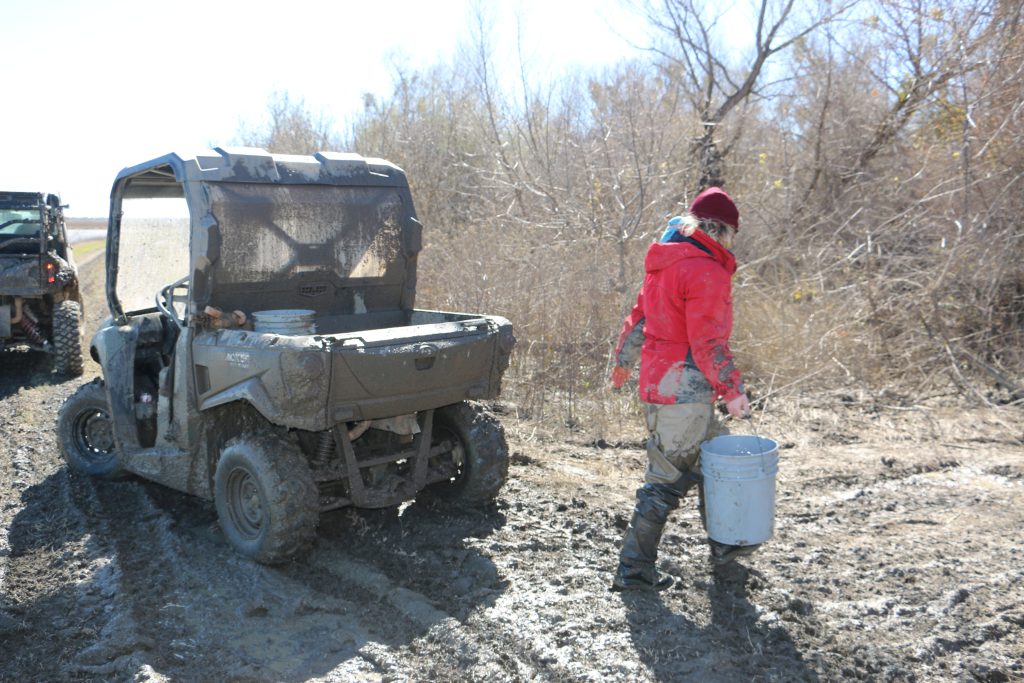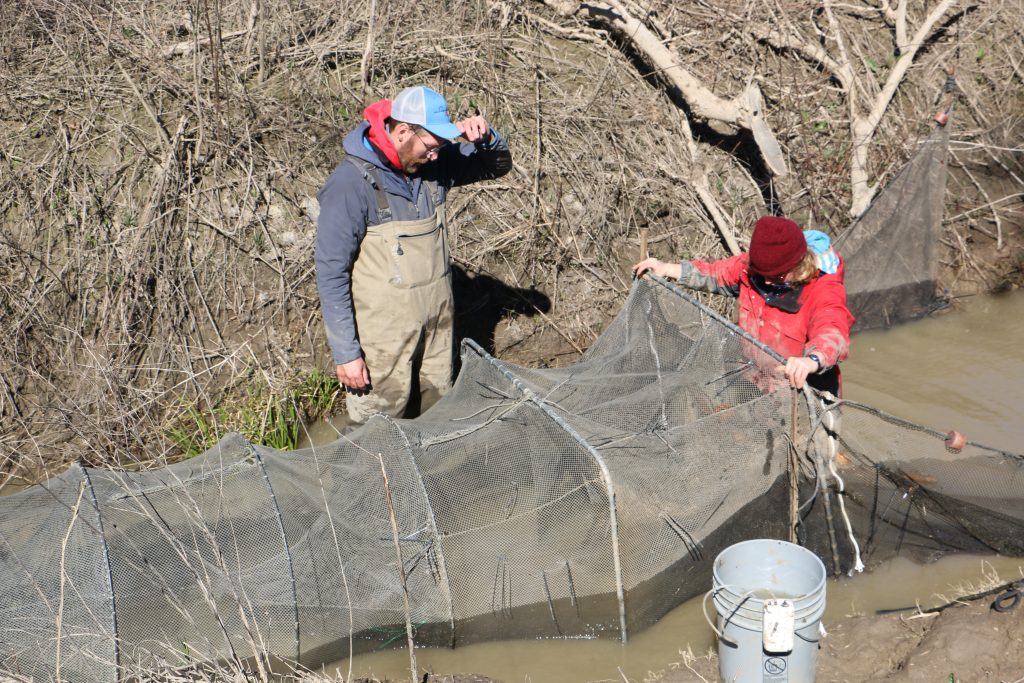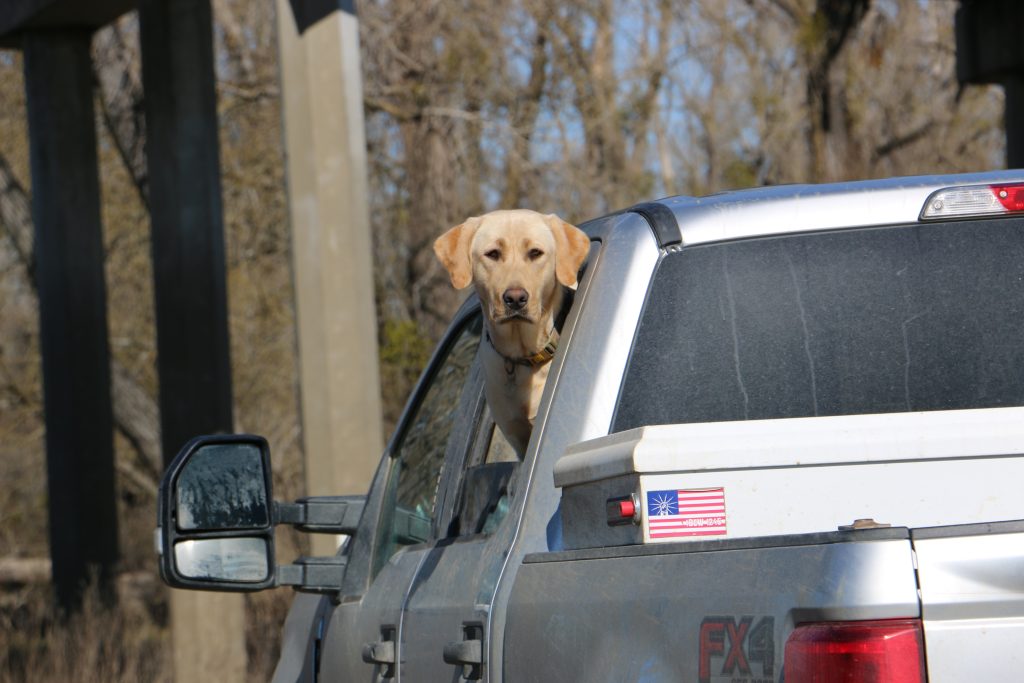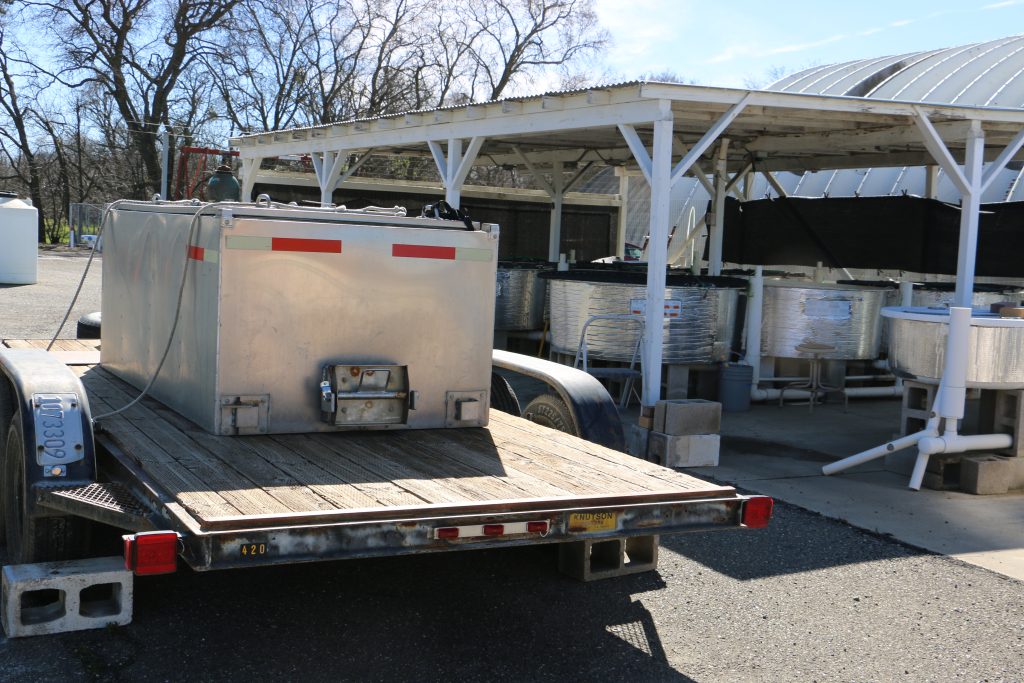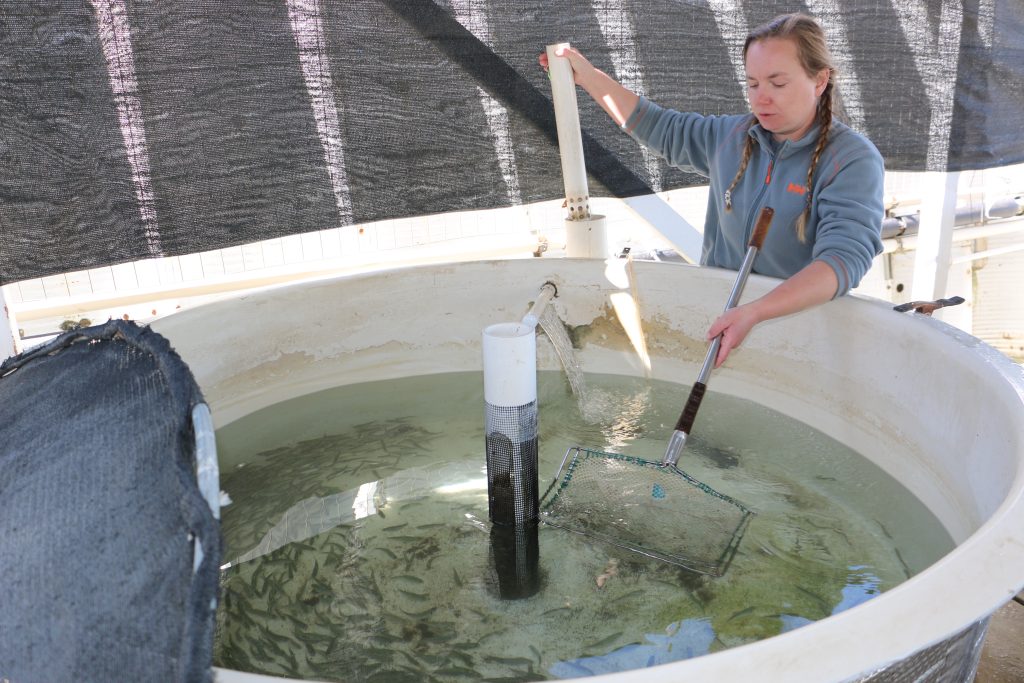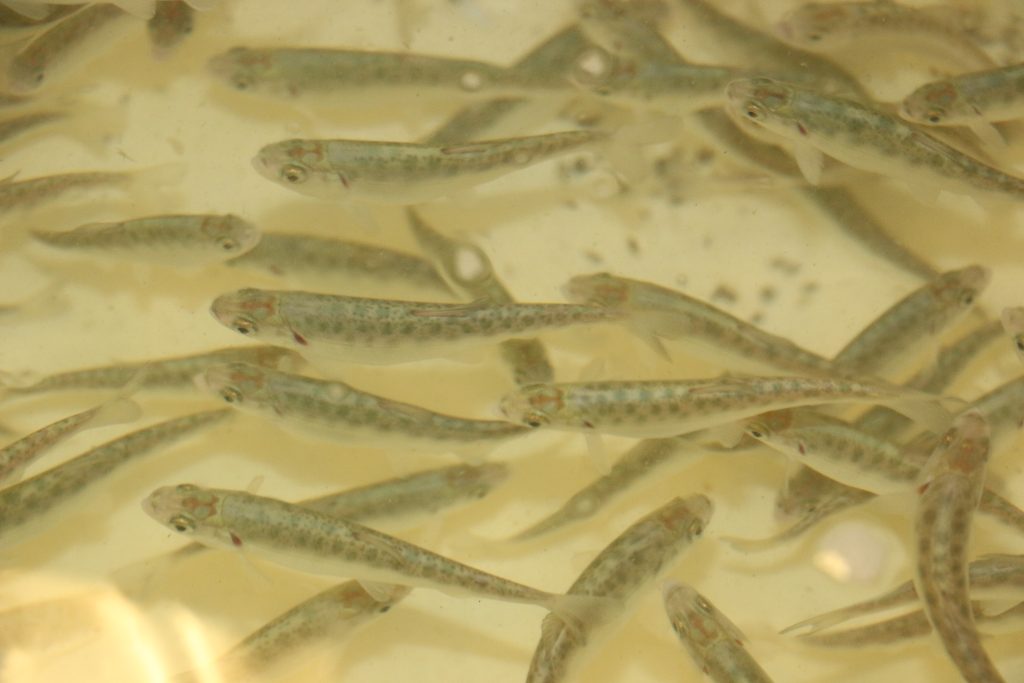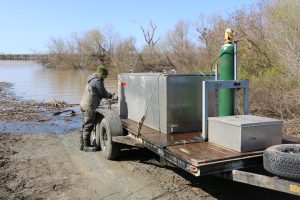Updated Catch Numbers
To date, we had captured over 372 fish via trap net and seining. Based on size chart assessments, these included 69 wild fall-run sized, 1 late-full-run-sized, 8 winter-run-sized, and 7 spring-run-sized Chinook salmon. We still had found/experienced 0 mortality of any non-fall-run wild Chinook salmon. Overall mortality has been low. About 3.5% (13/372) mortality of all fish encountered so far with fyke and seine. All of these were dead when we encountered them, no fish have died during or shortly after our handling that we have seen. Of these, 5 were PIT-tagged hatchery fall-run salmon, 4 wild fall run salmon, 1 shad, 2 mosquito fish, 1 sunfish.
General In-field Activity Updates
As a result of collaboration between the California Rice Commission, UC Davis, Natural Resources Conservation Service, National Marine Fisheries Service (NMFS) and CA Department of Fish and Wildlife (CDFW) during our Field Day on February 23, 2023, it was decided that we would not begin drainage of the project field on March 1, as per the draft management practice protocol. Reason being that our JSATS (telemetry) fish were not yet at taggable size due to the unseasonably cold weather. If we drained the UC Davis Team would have had to relocate these fish elsewhere causing challenging logistical issues and stress on the fish. Therefore, NMFS and CDFW suggested we consider an extension of the flooding timeline and all parties agreed to keep the project going deeper into March to allow JSATS fish growth. We really appreciated the collaboration and support for this approach which should serve to maximize the quality of the data being collected from this project. Many thanks to the grower, Steve Neader, for being willing to keep his field flooded for a longer period of time to let everything play out. Of course, temperature and dissolved oxygen (DO) will be continuously monitored during this period to be protective of the fish.
The field team replaced the fyke net at the drain with a larger mesh fyke. This is because the fish coming in are larger at the beginning of the field season and the larger mesh will enable better water flow-through when the field is drained. They also did some extra work to resecure all the JSATS fish cages to withstand the windy conditions a bit better. Solar panels at the PIT stations were increased in size to perform better with the cloudy conditions. Data from the HOBO loggers and PIT stations was downloaded. Temperature and DO continued to be well within healthy parameters. They also measured JSATS fish at both the project field and our second set of JSATS fish on the dryside field. Reminder: The dry side fish are primarily just an “insurance policy” in the event that something goes wrong with the main project field.
General Lab Activity Updates
The UC Davis Team was very busy in the lab clipping adipose fins on about 8,500 lab-reared fish.
Web-related Resources
All the recent PIT tag data was uploaded to the In-field Salmon Movement Shiny App. We’ve also made some interpretive upgrades to the App to make it a bit easier for everyone to interpret. A link to this App is now prominently linked to the Project Website. Basically, this App enables a user to click on any one of over 3,100 PIT-tagged fish that has been detected in the field thus far and view all of the areas of the field that the fish have travelled to since initial detection.
